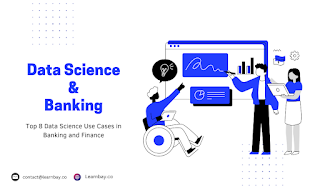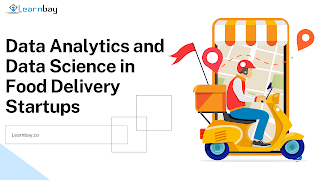Top 8 Data Science Use Cases in Banking and Finance
Using data science in the banking industry is no longer merely a trend; it is now necessary to maintain competitiveness. Banks need to know how big data technologies might aid in more efficient resource allocation, informed decision-making, and improved performance.
This is a collection of data science use cases for the banking industry that we've put together to give you an idea of how you may work with your enormous amounts of data.
Data and how to use it efficiently. Further, you can check out the job-ready data science course in Bangalore, developed with accreditation from IBM.
Data Science Use Cases in Banking
Fraud detection
Machine learning is essential for efficiently identifying and preventing fraud involving credit cards, accounting, insurance, and other areas. Banking must employ proactive fraud detection techniques to safeguard customers and employees. If a bank detects fraud as soon as feasible, it can restrict account activity to minimize losses more quickly. Banks can obtain the necessary protection and save significant losses by implementing several fraud detection techniques.
The essential methods for detecting fraud include:
Getting data samples for an estimate and preliminary testing of models
Estimating models
Deployment phase and testing
Data scientists must train and fine-tune each data collection separately since each is unique. Data-mining techniques, including association, clustering, forecasting, and classification skills, are required to translate the rich theoretical knowledge into real-world applications.
When there are abnormally high transactions, the bank's fraud prevention system is set up to hold them until the account holder verifies the deal, which is an example of effective fraud detection. Fraud detection algorithms for new accounts might look at huge purchases of popular goods or several accounts formed quickly with comparable data.
Managing Customer data
Banks must gather, analyze, and store massive volumes of data. Yet, instead of seeing this as merely a compliance exercise, machine learning, and data science technologies may turn this into an opportunity to learn more about their clientele and generate new income prospects.
In the modern world, digital banking is becoming more and more prevalent. Terabytes of client data are generated. As a result, the data scientists' first task is to separate out the genuinely pertinent information.
In order to improve corporate decision-making, data professionals may assist banks in unlocking new income prospects by isolating and processing just the most essential customer data. Armed with knowledge about customer behaviors, interactions, and preferences, they can do this with precise machine-learning models.
Risk modeling for investment Banks
Investment banks highly value risk modeling since it is essential for determining the price of financial goods and regulating financial activity. Investment banking determines the worth of businesses to obtain capital for corporate financing, support mergers, and acquisitions, carry out corporate restructuring or reorganizations, and for investment purposes.
As a result, risk modeling appears to be of utmost importance to banks and is best assessed with the availability of additional information and data science approaches. Because of the power of big data, innovations in the field are now utilizing cutting-edge technology for effective risk modeling and, consequently, improved data-driven decisions.
Personalized Marketing
The key to successful marketing is creating a customized offer that suits the requirements and preferences of the particular customer. With the help of data analytics, we can develop tailored marketing that presents the ideal product to the ideal customer at the perfect moment on the ideal device. Data mining is widely used for target selection to locate possible customers for a new product.
Data scientists create a model that forecasts a client's likelihood of responding to a promotion or offer using behavioral, demographic, and historical purchase data.
Lifetime Value Prediction
The overall value a firm will get from a client throughout their relationship is predicted by the term "customer lifetime value" (CLV). The importance of this metric is growing swiftly since it helps establish and sustain relationships with a specific group of customers that are mutually beneficial and encourage business growth.
Finding and maintaining profitable clientele is a never-ending challenge for banks.
Banks now require a 360-degree perspective of each consumer to optimally focus their resources due to increased competition. The usage of various banking goods and services, their volume and profitability, as well as other customer factors, including geographic, demographic, and market data, must be considered.
For this data to be useful and understandable, much cleaning and modification are frequently required. The bank's clients' behaviors and expectations vary widely, as do their profiles, goods, or services. To create a CLV model, data scientists can use various methods and tools, including generalized linear models (GLM), stepwise regression, classification, and regression trees (CART).
Creating a predictive model to identify future marketing tactics based on CLV is a crucial step in ensuring that each customer has a positive experience with the business throughout their lifespan, promoting increased profitability and expansion.
Real-time and Predictive Analytics
It is impossible to understate the growing importance of analytics in the banking sector. As every use case in banking involves analytics, machine learning algorithms, and data science, approaches may dramatically enhance banks' analytics strategies. With the rapid expansion of information availability and variety, analytics are becoming more sophisticated and accurate.
Although the cost and size of data processors have decreased over the past few years, the amount of valuable data indicating real signals remains remarkable, rather than simply noise, has increased enormously.
Making more informed strategic decisions and successful issue-solving depend on separating noise from actual essential facts. Real-time analytics help identify the problem preventing the business from moving forward, while predictive analytics help choose the best way to solve the problem. For detailed information on predictive analytics and other data science techniques, refer to the data science training in Bangalore, and learn directly from the industry experts.
Customer segmentation
Customer segmentation is the process of dividing up a client base into several categories based on either their behavior (for behavioral segmentation) or distinctive characteristics. In order to determine the CLV of each client group and identify high- and low-value segments, data scientists have access to a wide range of techniques, including clustering, decision trees, logistic regression, etc.
It need not be demonstrated that such client segmentation enables efficient marketing resource allocation, maximizing the point-based approach to each customer group and selling prospects. Remember that customer segmentation aims to improve customer service, boost customer loyalty, and encourage customer retention—all of which are essential for the banking sector.
Recommendation Engines
Using basic algorithms, data science, and machine learning technologies may evaluate and filter user behavior to present him with the most accurate and relevant suggestions. First, before the user does his own search, these recommendation engines provide the items that could interest him. In order to prevent duplicating offers, data professionals evaluate and analyze a lot of data, determine client profiles, and collect data demonstrating their interactions.
Conclusion
In order to recruit new clients, banks must understand the crucial role of data science, incorporate it into their decision-making process, and develop strategies based on insightful information from their client's data. Thus, to integrate Big Data analytics into your operational models and get an advantage over the competition, start with simple, actionable steps.
Given how fast the field of data science is developing and the wide range of applications that machine learning models may be used for, this list of use cases will only grow. Actual data to provide ever-more accurate results.



Comments
Post a Comment